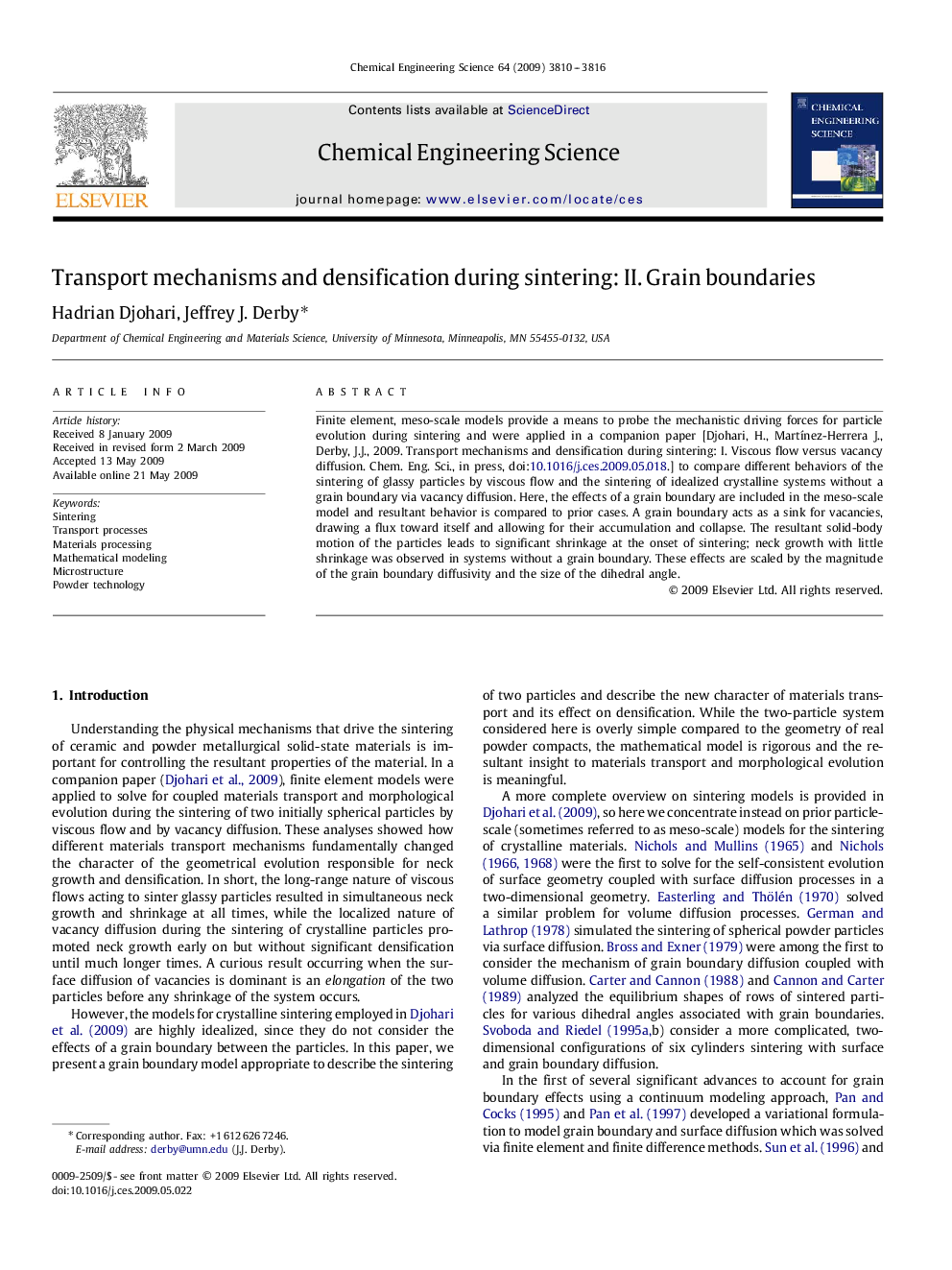| Article ID | Journal | Published Year | Pages | File Type |
|---|---|---|---|---|
| 157910 | Chemical Engineering Science | 2009 | 7 Pages |
Finite element, meso-scale models provide a means to probe the mechanistic driving forces for particle evolution during sintering and were applied in a companion paper [Djohari, H., Martínez-Herrera J., Derby, J.J., 2009. Transport mechanisms and densification during sintering: I. Viscous flow versus vacancy diffusion. Chem. Eng. Sci., in press, doi:10.1016/j.ces.2009.05.018.] to compare different behaviors of the sintering of glassy particles by viscous flow and the sintering of idealized crystalline systems without a grain boundary via vacancy diffusion. Here, the effects of a grain boundary are included in the meso-scale model and resultant behavior is compared to prior cases. A grain boundary acts as a sink for vacancies, drawing a flux toward itself and allowing for their accumulation and collapse. The resultant solid-body motion of the particles leads to significant shrinkage at the onset of sintering; neck growth with little shrinkage was observed in systems without a grain boundary. These effects are scaled by the magnitude of the grain boundary diffusivity and the size of the dihedral angle.
